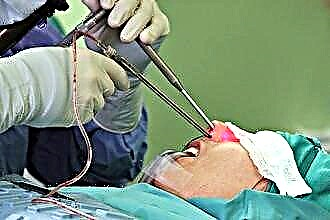Ear symptoms vary. The most common of these are pain, tinnitus, hearing impairment. In this case, the nature of pain can be different. It can be itching in the ear, a feeling of heaviness, or unbearable shooting pain, in which the child constantly screams and cries.
Nausea, vomiting, lack of coordination are also signs of damage to the internal part of the hearing organ. Objective symptoms indicating the involvement of the ear in the process are its redness and swelling. The itching of the parotid region and, directly, the auricle can also characterize a certain pathology of this organ.
Physiological causes

Noticing that a six-month-old child scratches his ears, parents should not panic and try to find a serious pathology. First of all, it is necessary to determine the entire complex of additional symptoms.
If the general condition of the child is not disturbed, he is cheerful, active, his appetite is preserved, then we are not talking about severe pathology.
Moreover, many parents notice that at this age such actions can be associated with teething. After the tooth appears, the symptoms decrease. Some mothers report that their baby scratches the ear when tired or before bed. Many pediatricians agree that in the absence of other signs, such actions performed by a child at the age of several months may indicate his attempts to learn about the world and himself. At the same time, the auricle turns red, which is due to the flow of blood. This symptom should also not bother the parents. Stopping the manipulation within a short time leads to the restoration of skin color.
If the development of a symptom is observed on one side, and there are no other signs, parents should carefully consider the contents of the external auditory canal. The presence of a piece of cotton wool left after the toilet can be the reason that caused the development of this situation. Similarly, the child will behave in the presence of a foreign body in the ear.
 In this case, depending on the size of the foreign body, the symptoms may be more pronounced. In the case of skin trauma, even the presence of bloody discharge, the development of pain syndrome is noted. If this toy, button, or bolt is in the back of your ear, it is best to seek professional help.
In this case, depending on the size of the foreign body, the symptoms may be more pronounced. In the case of skin trauma, even the presence of bloody discharge, the development of pain syndrome is noted. If this toy, button, or bolt is in the back of your ear, it is best to seek professional help.
Attempts to self-remove a foreign body from the ear can lead to mechanical injury to the eardrum.
Pathological processes
Parents and the attending physician should have an opposite attitude if the child itches behind the ears, and there are additional signs. This symptom may be due to the development of pathological processes, such as
- otitis media of the middle ear;
- fungal infection of the outer ear;
- allergic conditions;
- a bite of an insect;
- psoriasis.
With all these pathological conditions, it can be observed that the child's ears itch.
In order to clarify the diagnosis, it is necessary to collect and study all accompanying signs. In some cases, instrumental and laboratory diagnostics will be required to clarify the diagnosis.
Otitis media of the middle and outer ear
Otitis media is manifested by severe pain syndrome.
At the same time, children become restless. One of the characteristic signs of this pathology is the child's attempt to scratch his ear, touch the lobe. However, the child's condition is severely impaired. He is restless, crying or screaming, there may be a runny nose, nasal congestion. The condition is characterized by the development of hyperthermia. Purulent inflammation of the ear is characterized by suppuration.
 This condition is dangerous for its complications, such as mastoiditis, purulent meningitis. When symptoms of otitis media appear, an immediate consultation with an otolaryngologist is indicated. Treatment of this disease includes the use of vasoconstrictor nasal drops, ear drops with an antiseptic and anti-inflammatory component, and analgesics. Antibiotics should be prescribed as needed. During the entire treatment, the patient should be under the direct supervision of a specialist who, depending on the results of the instrumental examination, will correct the treatment.
This condition is dangerous for its complications, such as mastoiditis, purulent meningitis. When symptoms of otitis media appear, an immediate consultation with an otolaryngologist is indicated. Treatment of this disease includes the use of vasoconstrictor nasal drops, ear drops with an antiseptic and anti-inflammatory component, and analgesics. Antibiotics should be prescribed as needed. During the entire treatment, the patient should be under the direct supervision of a specialist who, depending on the results of the instrumental examination, will correct the treatment.
Ear inflammation can be caused not only by a bacterial pathogen, but also by a fungal pathogen. In this case, the auricle and the skin behind it are most often affected.
Objective signs of otitis externa can be hyperemia, swelling, and the presence of peeling.
In this case, the child scratches behind the ears. Localization of the process, itching of the skin make it possible to suspect the fungal nature of the lesion. Clarification of the diagnosis is facilitated by scraping from the skin of this focus, which allows to confirm the fungal nature of the disease. Bacteriological culture helps to identify the pathogen. The use of local antifungal drugs helps to normalize the clinical picture.
The behind-the-ear region is also a typical site of localization of such a serious disease as psoriasis. In favor of this disease is evidenced by the presence of a psoriatic triad, when, when the lesion is scraped, a symptom of a stearin spot, terminal film and bloody dew is noted. In this case, the clinical picture may be similar to mycotic lesion. A reliable method of clarifying the diagnosis in this case is a biopsy.
Allergy
 A common reason why a child scratches his ears is an allergic reaction. The most common allergens in this case are food, medicines, as well as household dust, fluff, pet hair. The affected area may be reddened, swollen. The symmetry of the lesion is noted. Clarification of the diagnosis in children is complicated by the fact that, due to imperfect immunity, many studies under 5 years of age are uninformative and dangerous.
A common reason why a child scratches his ears is an allergic reaction. The most common allergens in this case are food, medicines, as well as household dust, fluff, pet hair. The affected area may be reddened, swollen. The symmetry of the lesion is noted. Clarification of the diagnosis in children is complicated by the fact that, due to imperfect immunity, many studies under 5 years of age are uninformative and dangerous.
The most acceptable method of treating allergies in children is to eliminate hazardous foods and household items. An external antihistamine preparation, Fenistil gel, can be used as a medicine. With food allergies, good results are achieved by using sorbents.
A child's ear itches also in the case of an insect bite, mosquito, midge. The pain syndrome is not very pronounced, in contrast to a wasp or bee sting. The presence of a hyperemic and edematous focus is characteristic. An insect bite is evidenced by the asymmetry of the lesion. To confirm the diagnosis, you must carefully examine the focus. Most often, it is possible to find the injection site, which is a very pathognomonic sign of this pathology.
Parents can be of great help in diagnosing a condition in which children scratch their ears. They watch their child closely and are the first to notice abnormalities in their behavior. However, the consultation of a doctor should not be neglected, since in addition to physiological processes, this symptom may indicate the development of a pathology that requires immediate correction.



